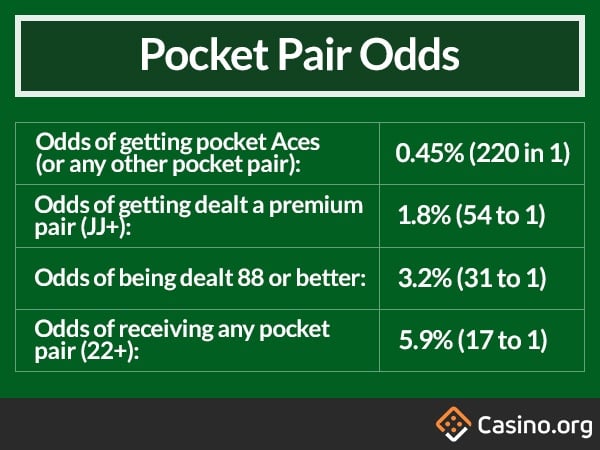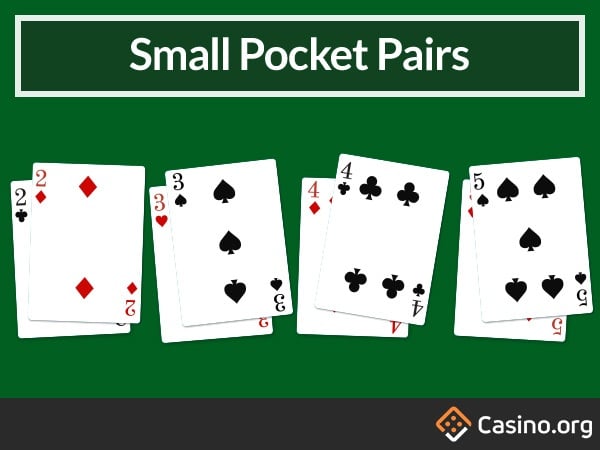Understanding Pocket Pairs in Poker
Pocket pairs are among the most intriguing hands in Texas Hold’em due to their potential strength and capacity to surprise even seasoned opponents. Played strategically, they can yield significant rewards, but mishandled, they may lead to costly mistakes. In this guide, we’ll explore the fundamentals of pocket pairs, delve into their types, discuss the odds of being dealt these hands, and provide nuanced strategies for maximizing your profits with each category.

What Is a Pocket Pair in Poker?
A pocket pair occurs when a player receives two hole cards of the same value-like two twos (2-2) or two aces (A-A)-at the start of a hand. Although the strength of pocket pairs varies greatly depending on their rank, they all share unique strategic considerations that set them apart from other starting hands.
Pocket Pair Categories and Their Impact
Poker literature typically divides pocket pairs into three categories, each demanding distinct tactical approaches:
- High-value pocket pairs (usually Jacks to Aces)
- Middle pocket pairs (Sevens to Tens)
- Low pocket pairs (Sixes and below)
While there’s some debate about the dividing lines, these groupings offer a pragmatic framework for hand assessment and play.
Chances of Getting a Pocket Pair
Before diving into gameplay tactics, it’s helpful to understand the probability behind receiving these hands. The odds of being dealt any pocket pair in Texas Hold’em stand at about 5.9%. On average, expect to see a pocket pair once every 17 hands.

Analyzing Pocket Pair Types: How to Play Each One
Each subgroup of pocket pairs presents its own opportunities and pitfalls. Here’s how to navigate each one at the table.
Premium Pocket Pairs: Maximizing Value Pre-Flop and Beyond

Pocket Jacks, Queens, Kings, and Aces are among the most valuable hands you can be dealt before the flop in Texas Hold’em. While Jacks can be dicey in multi-way scenarios, Queens and above are formidable across nearly all game situations.
These hands gain strength as the number of opponents in the hand diminishes because the risk of being overtaken on the board decreases with fewer cards in play. The best strategy is often to be aggressive before the flop-raising and reraising to build the pot and reduce the field.
Keep these principles in mind:
- If the board comes low and lacks overcards (for example, 10-6-2), you’re likely still ahead with strong pairs like Kings, even with multiple opponents.
- In multi-way pots, tread carefully. If you’re facing lots of aggression-especially on later streets like the turn-it may be time to re-evaluate even a strong pocket pair, as opponents could have completed draws or two-pair combinations.
Being able to fold an overpair when circumstances demand is a hallmark of elite poker play. Knowing when to pursue value and when to step back protects your bankroll.
Medium Pocket Pairs: Adaptability is Key

Pockets between 7-7 and 10-10 occupy a tricky middle ground in poker. They can win on their own against a single opponent but lose value rapidly as more players enter the hand.
Key strategies when holding medium pairs:
- Aim to play pots heads-up when possible, as these hands can often hold up without needing to improve.
- With multiple callers, your priority typically shifts to hitting a set on the flop-or else folding to pressure is often wise.
- Adjust your play based on position and opponent tendencies. For example, against a tight early-position raiser, a call to see the flop is usually preferable; against a loose late-position opener, a more aggressive approach may be justified, especially with shorter stacks.
Being flexible and reading both the table and your position is critical when navigating these hands.
Small Pocket Pairs: Set Mining and Managing Risk

The lower end of pocket pairs (6-6, 5-5, and below) presents a risky but potentially rewarding situation. Most players use these for “set mining”-seeking to hit a third matching card on the flop and win a large pot from an opponent with a strong yet outdrawn hand.
Key pointers for playing small pocket pairs effectively:
- Enter the pot as inexpensively as possible; overextending pre-flop can lead to unprofitable situations.
- Avoid raising or reraising with these hands unless positioned for a strategic play; folding to aggression, especially from multiple opponents, is often best.
- If you don’t hit a set on the flop, play cautiously and resist the urge to bluff frequently. Without blockers, your bluffing opportunities diminish, and the risk increases.
Keep in mind that the chance of flopping a set is about 1 in 7.5 (around 12%), which means you often won’t connect. Don’t commit a significant portion of your chips chasing low-probability outcomes unless the situation truly justifies it.
Crucial Factors When Playing Pocket Pairs
No matter the rank of your pocket pair, several universal factors should influence your approach:
Effective Stack Size
- With smaller stacks (around 20 big blinds or fewer), set mining becomes less profitable-favor shoving or folding, depending on the situation.
- With deeper stacks, going for sets with smaller pairs or building pots with larger pairs is more viable.
Table Position
- Late position generally benefits weak pocket pairs, allowing for cheaper entry and more information.
- In early position or out of position, be more selective-extracting value and managing risk gets tougher.
Opponent Tendencies
- Adapt to the table’s playing style: in loose, aggressive games, set mining can pay off. In conservative games, value drops as opponents are less likely to commit chips after the flop.
Wrap-Up: Getting the Most Value from Pocket Pairs
Pocket pairs can be powerful, but they demand discipline, adaptability, and careful observation at the table. Let mathematical probabilities guide your expectations, and remain open to adjusting your tactics as a hand unfolds. Recognize when a bold all-in is justified and when discretion is the better part of valor.
Deploy sound strategies rooted in core concepts-stack sizes, position, and opponent tendencies-and your ability to capitalize on pocket pairs will grow, along with your poker confidence and winnings.

Tadas Peckaitis is a seasoned professional poker player, published author, and poker coach committed to helping others succeed at the tables. Find more insights on his social channels.













